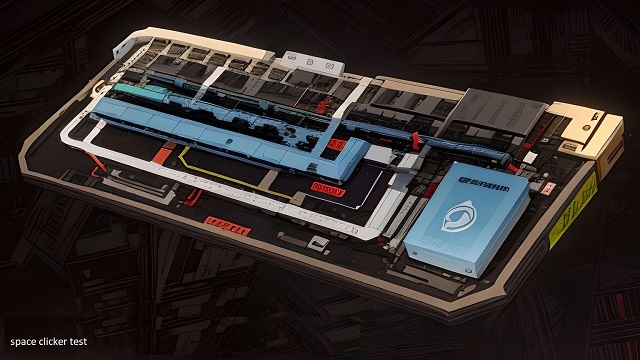Creating a comprehensive analysis of a “space clicker test” in the context of a hypothetical game or software application involves detailing the mechanics, user engagement strategies, narrative integration, and potential impacts on both the user experience and the broader gaming or software ecosystem.
A space clicker test refers to a method of evaluating user interaction and engagement within a space-themed clicker game. Clicker games, also known as incremental games, involve players performing simple actions—such as clicking on the screen—to earn points or currency, which can then be used to purchase upgrades or items that automate actions and incrementally increase the player’s ability to earn points or currency at a faster rate. The space theme adds a layer of narrative and aesthetic appeal, potentially enhancing user engagement through a compelling storyline or visually striking graphics that evoke the vastness and mystery of space.

Game Mechanics
The core mechanic of a space clicker game involves the player clicking on a designated area or icon to accumulate resources. These resources can be fictional (e.g., “astrominerals”) or based on real space concepts (e.g., hydrogen fuel, rare metals). The simplicity of the mechanic makes it accessible to a wide range of players, including those who may not typically engage with more complex game genres.
To test these mechanics, developers can track metrics such as click rate, time spent on the game, and progression speed. These data points help in understanding how players interact with the game and which aspects are most engaging or need improvement.
User Engagement Strategies
Engagement in a space clicker game can be enhanced through various strategies:
- Progressive Difficulty and Rewards: Introducing new challenges and rewards as players progress to keep them engaged and feeling a sense of achievement.
- Narrative Integration: Embedding a storyline within the game can significantly increase engagement. For a space-themed game, this could involve exploring new planets, encountering alien species, or building a space empire.
- Visuals and Sound Design: High-quality graphics and sound effects that reflect the vastness and wonder of space can enhance immersion, making the game more appealing.
Testing and Optimization
The space clicker test isn’t just about evaluating the game’s current state; it’s also about optimizing it based on player feedback and data. Heatmaps of clicks can show developers which areas of the game are attracting the most attention, allowing for more focused improvements.
Community and Social Features
Integrating community features, such as leaderboards or the ability to visit and see friends’ space empires, can increase engagement by adding a competitive or social element. Sharing achievements on social media can also attract new players and encourage existing ones to return.
Monetization
Monetization strategies need to be carefully considered in space clicker games. While in-app purchases for resources or upgrades are common, developers must ensure they don’t unbalance the game or alienate players who prefer not to spend money. Ads can provide revenue but should not interrupt the gameplay experience negatively.
Narrative and Thematic Depth
The space theme offers rich opportunities for narrative depth and thematic exploration. Developers can incorporate educational elements about real space exploration and astronomy, potentially partnering with scientific organizations to add authenticity. The game could also explore themes of isolation and discovery, reflecting the existential aspects of space exploration.
Impact on the Gaming Ecosystem
Space clicker games contribute to the diversity of the gaming ecosystem, offering a blend of simplicity, strategy, and narrative that can appeal to a broad audience. They can serve as gateways for non-gamers to explore other game genres and for gamers to engage with space and science-themed content in an interactive format.
Conclusion
A space clicker test is crucial for understanding and improving the player’s experience, ensuring that the game is both engaging and rewarding. By focusing on mechanics, user engagement, narrative integration, and community features, developers can create a space clicker game that stands out in the crowded mobile and web game market. Through careful testing and optimization, developers can refine the game to better meet the needs and preferences of their audience, ultimately contributing to the broader landscape of educational and entertaining gaming experiences.
In a real-world application, this analysis would be accompanied by user data and feedback, guiding the iterative development process to fine-tune the game for optimal engagement and satisfaction.
